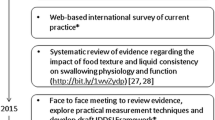Abstract
High fluid intake is an effective preventative strategy against recurrent kidney stones but is known to be challenging to achieve. Recently, a smart water bottle (Hidrate Spark™, Minneapolis, MN) was developed as a non-invasive fluid intake monitoring system. This device could help patients who form stones from low urine volume achieve sustainable improvements in hydration, but has yet to be validated in a clinical setting. Hidrate Spark™ uses capacitive touch sensing via an internal sensor. It calculates volume measurements by detecting changes in water level and sends data wirelessly to users’ smartphones through an application. A pilot study was conducted to assess accuracy of measured fluid intake over 24 h periods when used in a real life setting. Subjects were provided smart bottles and given short tutorials on their use. Accuracy was determined by comparing 24-h fluid intake measurements calculated through the smart bottle via sensor to standard volume measurements calculated by the patient from hand over the same 24 h period. Eight subjects performed sixty-two 24-h measurements (range 4–14). Mean hand measurement was 57.2 oz/1692 mL (21–96 oz/621–2839 mL). Corresponding mean smart bottle measurement underestimated true fluid intake by 0.5 ozs. (95% CI −1.9, 0.9). Percent difference between hand and smart bottle measurements was 0.0% (95% CI − 3%, 3%). Intraclass correlation coefficient (ICC), calculated to assess consistency between hand measures and bottle measures, was 0.97 (0.95, 0.98) indicating an extremely high consistency between measures. 24-h fluid intake measurements from a novel fluid monitoring system (Hidrate Spark™) are accurate to within 3%. Such technology may be useful as a behavioral aide and/or research tool particularly among recurrent stone formers with low urinary volume.



Similar content being viewed by others
References
Scales CD Jr, Smith AC, Hanley JM, Saigal CS, Urologic Diseases in America Project (2012) Prevalence of kidney stones in the United States. Eur Urol 62(1):160–165
Kirkali Z, Rasooly R, Star RA, Rodgers GP (2015) Urinary stone disease: progress, status, and needs. Urology 86(4):651–653
Borghi L, Meschi T, Amato F, Briganti A, Novarini A, Giannini A (1996) Urinary volume, water and recurrences in idiopathic calcium nephrolithiasis: a 5-year randomized prospective study. J Urol 155(3):839–843
Qaseem A, Dallas P, Forciea MA, Starkey M, Denberg TD (2014) Dietary and pharmacologic management to prevent recurrent nephrolithiasis in adults: a clinical practice guideline from the American College of Physicians. Ann Intern Med 161(9):659–667
Dauw CA, Yi Y, Bierlein MJ et al (2016) Factors associated with preventive pharmacological therapy adherence among patients with kidney stones. Urology 93:45–49
Bassi N, Karagodin I, Wang S et al (2014) Lifestyle modification for metabolic syndrome: a systematic review. Am J Med 127(12):1242-e1
Lotan Y, Buendia Jimenez I, Lenoir-Wijnkoop I et al (2013) Increased water intake as a prevention strategy for recurrent urolithiasis: major impact of compliance on cost-effectiveness. J Urol 189(3):935–939
Scales CD Jr, Tasian GE, Schwaderer AL, Goldfarb DS, Star RA, Kirkali Z (2016) Urinary stone disease: advancing knowledge, patient care, and population health. Clin J Am Soc Nephrol 11(7):1305–1312
Free C, Phillips G, Watson L et al (2013) The effectiveness of mobile-health technologies to improve health care service delivery processes: a systematic review and meta-analysis. PLoS Med 10(1):e1001363
Hou C, Carter B, Hewitt J, Francisa T, Mayor S (2016) Do mobile phone applications improve glycemic control (HbA1c) in the self-management of diabetes? A systematic review, meta-analysis, and GRADE of 14 randomized trials. Diabetes Care 39(11):2089–2095
Stevens DJ, McKenzie K, Cui HW, Noble JG, Turney BW (2015) Smartphone apps for urolithiasis. Urolithiasis 43(1):13–19
Smith LP, Hua J, Seto E et al (2014) Development and validity of a 3-day smartphone assisted 24-hour recall to assess beverage consumption in a Chinese population: a randomized cross-over study. Asia Pac J Clin Nutr 23(4):678–690
Conroy DE, Dubansky A, Remillard J et al (2017) Using behavior change techniques to guide selections of mobile applications to promote fluid consumption. Urology 99:33–37
Author information
Authors and Affiliations
Corresponding author
Ethics declarations
Conflict of interest
No authors of this study have any conflicts or competing interests in relation to this study.
Rights and permissions
About this article
Cite this article
Borofsky, M.S., Dauw, C.A., York, N. et al. Accuracy of daily fluid intake measurements using a “smart” water bottle. Urolithiasis 46, 343–348 (2018). https://doi.org/10.1007/s00240-017-1006-x
Received:
Accepted:
Published:
Issue Date:
DOI: https://doi.org/10.1007/s00240-017-1006-x




